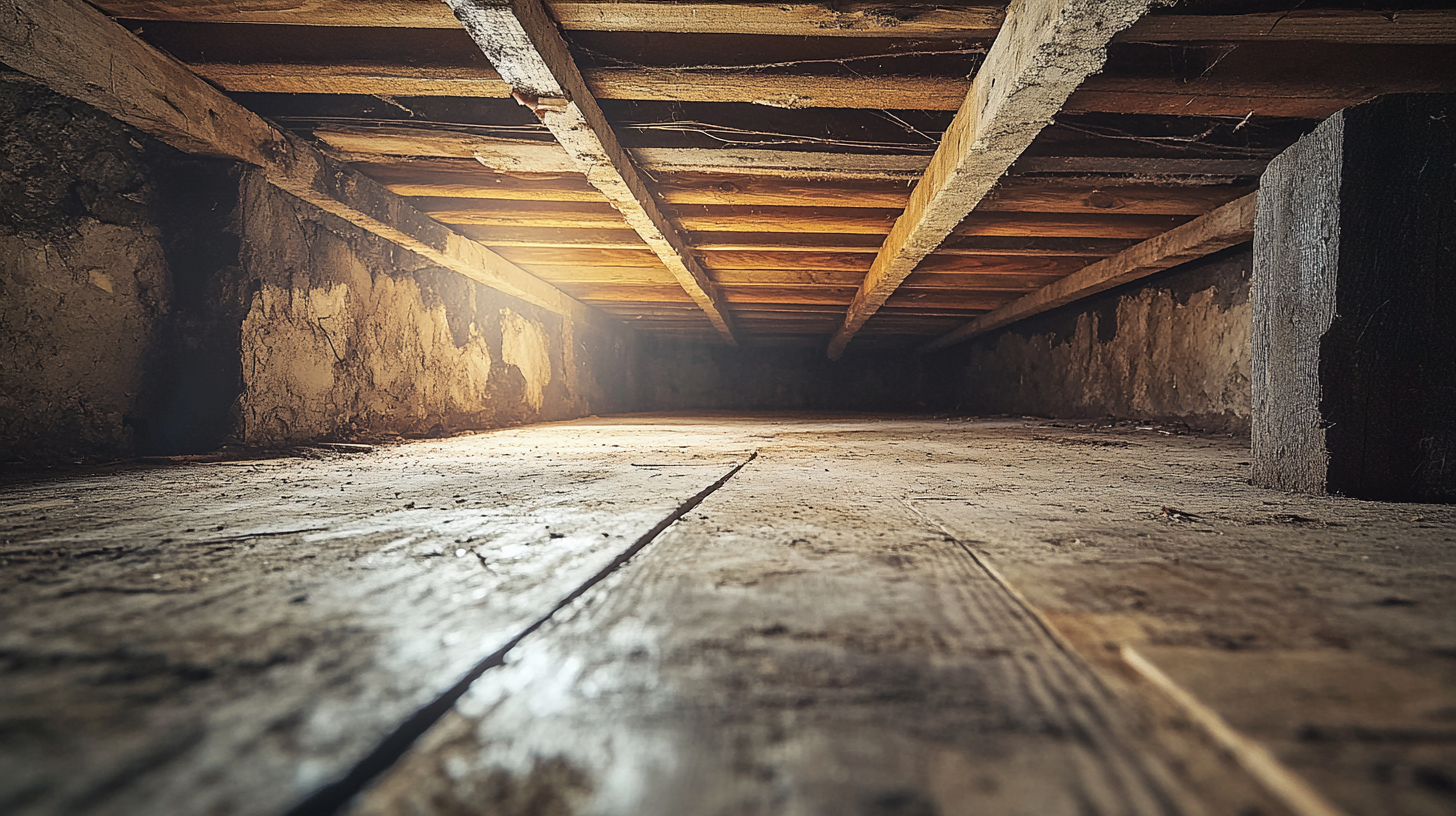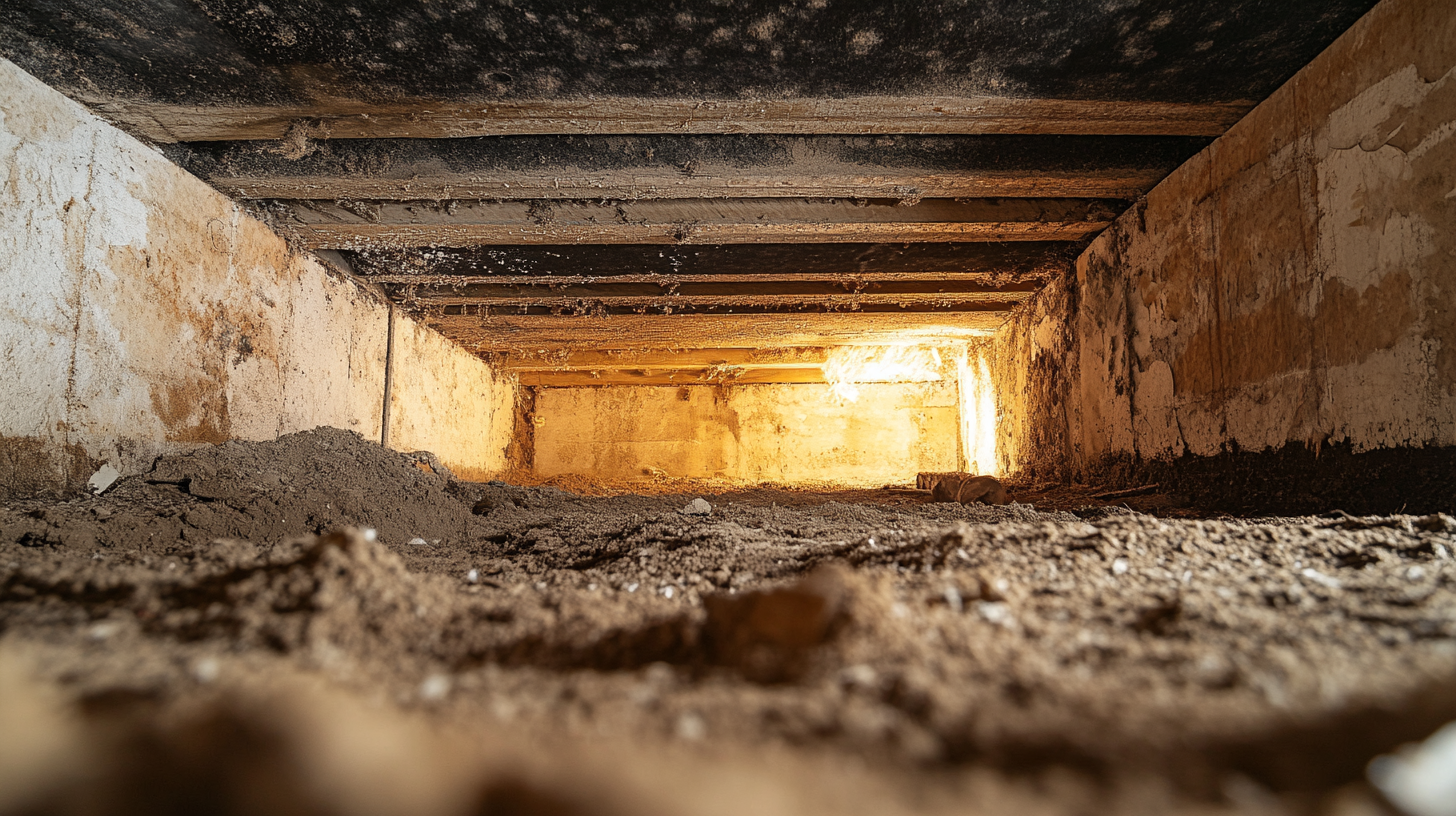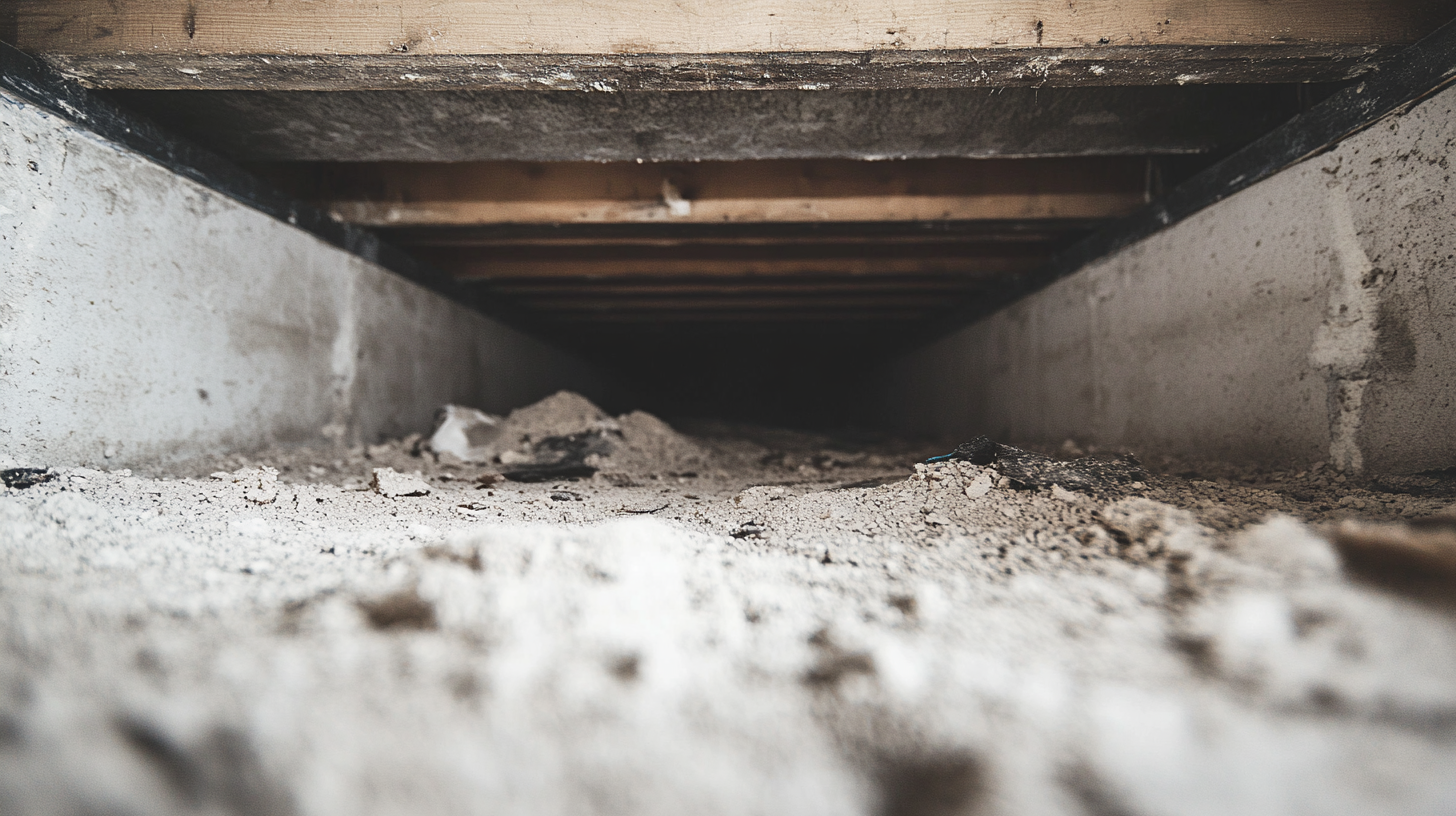Locally owned and operated.
Call Us Anytime: +1 843-304-6615
CLEANING & RESTORATION
24/7 Emergency Services:
Call us at 843-305-3383
Locally owned and operated.
Call Us Anytime: 843-305-3383
CLEANING & RESTORATION
24/7 Emergency Services:
Call us at 843-305-3383
Protecting Against Chemical Exposure in Restoration Work

In restoration projects, the use of various chemicals is often necessary for cleaning, disinfecting, and repairing damaged properties. While these chemicals are essential for effective restoration, they also pose significant risks if not handled properly. Ensuring chemical safety is therefore a critical aspect of any restoration project, directly impacting the health and safety of workers and the overall success of the restoration efforts.
Proper chemical safety protocols help prevent harmful exposure to toxic substances that can cause acute and chronic health issues, ranging from skin irritation and respiratory problems to more severe conditions like chemical burns and poisoning. Implementing stringent safety measures ensures that workers are protected from these hazards, promoting a safer working environment.
Moreover, adhering to chemical safety guidelines ensures compliance with regulatory standards set by occupational safety organizations. This compliance is not only a legal requirement but also a mark of professionalism and commitment to maintaining high safety standards in the industry. Failure to comply can result in legal consequences, financial penalties, and damage to the company's reputation.
Effective chemical safety practices include proper storage and labeling of chemicals, providing appropriate personal protective equipment (PPE), and comprehensive training for all personnel involved in handling these substances. Regular safety audits and emergency preparedness plans are also crucial components of a robust chemical safety program.
In summary, the importance of chemical safety in restoration projects cannot be overstated. By prioritizing the safe handling, storage, and use of chemicals, restoration professionals can mitigate risks, protect their health, ensure regulatory compliance, and achieve successful project outcomes.
Identifying Chemical Hazards
Common Chemicals in Restoration
In restoration projects, various chemicals are employed to clean, repair, and disinfect damaged properties. Understanding the types of chemicals commonly used and the associated risks is essential for ensuring safety.
Types of Chemicals:
Solvents, Adhesives, Cleaning Agents, Pesticides: Restoration work often involves the use of solvents to remove stains and adhesives to repair structures. Cleaning agents are used extensively to sanitize affected areas, while pesticides might be necessary to eliminate pests that could further damage the property. Each of these chemicals has specific properties and uses, making them indispensable for effective restoration.
Potential Risks:
Inhalation, Skin Contact, Ingestion, Eye Exposure: Despite their utility, these chemicals pose various health risks if not handled properly. Inhalation of fumes from solvents and cleaning agents can lead to respiratory issues, while skin contact with adhesives or pesticides can cause irritation or burns. Accidental ingestion of these substances can result in poisoning, and eye exposure can cause severe damage, including vision loss. Understanding these potential risks is crucial for implementing appropriate safety measures.
Site Inspection and Assessment
A thorough site inspection and risk assessment are critical steps in identifying and managing chemical hazards in restoration projects. This proactive approach helps in mitigating risks and ensuring a safe working environment.
Conduct Thorough Inspections to Identify Chemical Hazards:
The first step in managing chemical hazards is to conduct a detailed inspection of the restoration site. This involves identifying all chemicals present and assessing the areas where they are used or stored. Inspectors should look for signs of chemical spills, leaks, or improper storage practices that could increase the risk of exposure. Special attention should be given to confined spaces and poorly ventilated areas where chemical fumes might accumulate.
Evaluate the Severity and Likelihood of Chemical Exposure:
Once chemical hazards are identified, it is essential to evaluate the severity and likelihood of exposure. This involves assessing how harmful the chemicals are and how likely it is that workers might come into contact with them. Factors to consider include the toxicity of the chemicals, the duration and frequency of exposure, and the effectiveness of existing safety measures. By evaluating these factors, restoration teams can prioritize risks and implement targeted safety protocols to mitigate them.
By identifying common chemicals and assessing the potential hazards they pose, restoration teams can create a safer work environment. Regular inspections and thorough risk assessments are vital components of this process, helping to protect workers from chemical-related injuries and illnesses.
Personal Protective Equipment (PPE)
Essential PPE
Personal Protective Equipment (PPE) is crucial in protecting restoration workers from the various hazards posed by chemicals, dust, mold, and other contaminants. Selecting and using the right PPE is essential for maintaining safety and health standards on the job.
Respiratory Protection:
Use Appropriate Respirators (e.g., N95, P100): Respiratory protection is vital when working with airborne contaminants. N95 respirators filter out at least 95% of airborne particles, making them suitable for protection against dust and mold spores. P100 respirators offer even higher protection, filtering at least 99.97% of airborne particles, and are essential when dealing with more hazardous substances, including certain chemical fumes. Choosing the right respirator depends on the specific hazards present in the restoration environment.
Protective Clothing:
Includes Gloves, Coveralls, and Boots: Protective clothing shields the skin from harmful substances. Gloves are necessary for handling chemicals and contaminated materials, protecting against skin irritation and chemical burns. Coveralls provide full-body protection, preventing contaminants from coming into contact with the skin and clothing. Boots, preferably with reinforced toes and chemical-resistant materials, protect the feet from spills, punctures, and impacts. The selection of protective clothing should be based on the specific risks associated with the tasks being performed.
Eye Protection:
Safety Goggles or Face Shields: Eye protection is essential to prevent injuries from chemical splashes, dust, and debris. Safety goggles provide a secure fit around the eyes, blocking out particulates and liquids. For more extensive protection, face shields cover the entire face, offering additional defense against splashes and flying debris. Using the appropriate eye protection helps prevent serious injuries and ensures that workers can perform their tasks safely.
Usage and Maintenance
Proper usage and maintenance of PPE are critical to ensuring its effectiveness in protecting workers from hazards. Regular training and inspections are necessary to maintain high safety standards.
Ensure Proper Fitting and Regular Inspection of PPE:
PPE must fit correctly to provide maximum protection. Ill-fitting equipment can lead to exposure to hazards and reduced effectiveness. Workers should be provided with PPE that fits them well, and adjustments should be made as necessary. Regular inspections of PPE are also essential to check for wear and tear, damage, or contamination.
Damaged or worn-out equipment should be replaced promptly to maintain safety.
Train Workers on Correct Usage, Donning, and Doffing Procedures: Proper training is crucial for the effective use of PPE. Workers should be trained on how to correctly put on (don) and take off (doff) PPE to avoid contamination and ensure it functions as intended. This includes understanding the correct order of donning and doffing, as well as techniques to prevent self-contamination. Training should be conducted regularly and include hands-on demonstrations to reinforce correct practices.
By ensuring the availability of essential PPE and providing comprehensive training on its use and maintenance, restoration teams can significantly reduce the risks associated with exposure to hazardous substances. Effective PPE practices are a cornerstone of a safe and healthy work environment in restoration projects.
Safe Handling and Storage of Chemicals
Handling Techniques
Proper handling techniques are essential to minimize the risk of exposure and ensure the safe use of chemicals in restoration projects. Following best practices helps protect workers and maintain a safe working environment.
Use Proper Tools and Techniques to Minimize Direct Contact with Chemicals:
When handling chemicals, it's crucial to use appropriate tools and equipment to avoid direct contact. This includes using tongs, scoops, or pumps to transfer chemicals, rather than pouring directly from containers. Additionally, always wear suitable PPE, such as gloves and protective clothing, to provide a barrier against chemical exposure. Implementing these techniques reduces the risk of spills, splashes, and accidental contact with hazardous substances.
Follow Manufacturer Instructions and Safety Data Sheets (SDS) for Each Chemical:
Each chemical used in restoration projects comes with specific handling instructions provided by the manufacturer. It's vital to follow these guidelines to ensure safe usage. Safety Data Sheets (SDS) offer comprehensive information about each chemical, including its properties, hazards, and recommended safety precautions. Workers should familiarize themselves with the SDS for each chemical they handle, understanding the potential risks and the necessary steps to mitigate them. This knowledge empowers workers to handle chemicals safely and respond appropriately in case of an emergency.
Storage Practices
Safe storage of chemicals is crucial to prevent accidental releases, spills, and hazardous reactions. Proper storage practices help maintain a safe environment and comply with regulatory requirements.
Store Chemicals in Labeled, Secure Containers:
Chemicals should be stored in their original containers whenever possible, as these are designed to be chemically compatible and secure. If transferring chemicals to new containers, ensure they are appropriate for the substance and clearly labeled with the chemical name, concentration, and hazard warnings. Secure lids tightly to prevent leaks and accidental spills. Storing chemicals in labeled, secure containers helps prevent accidental misuse and ensures that everyone knows the contents and associated hazards.
Ensure Proper Ventilation in Storage Areas to Prevent Accumulation of Fumes:
Chemical storage areas must be well-ventilated to prevent the buildup of hazardous fumes, which can pose significant health risks and lead to dangerous situations like explosions or fires. Ventilation systems should be designed to provide adequate air exchange, reducing the concentration of airborne chemicals. Storage areas should be regularly inspected to ensure ventilation systems are functioning correctly. Additionally, store volatile chemicals away from direct sunlight and heat sources to prevent degradation and the release of harmful vapors.
By implementing safe handling techniques and proper storage practices, restoration teams can significantly reduce the risks associated with chemical use. These measures protect workers, ensure compliance with safety regulations, and contribute to the overall safety and success of restoration projects.
Ventilation and Air Quality Management
Ventilation Systems
Effective ventilation systems are critical in maintaining safe air quality in restoration workspaces. Proper ventilation helps control the spread of fumes, dust, and other airborne contaminants, ensuring a healthier environment for workers.
Install Local Exhaust Ventilation (LEV) to Capture Fumes at the Source:
Local Exhaust Ventilation (LEV) systems are designed to capture and remove contaminants directly at their source, preventing them from dispersing into the workspace. These systems consist of hoods or ducts placed near the emission point, such as workstations where chemicals are used or dust is generated. By capturing fumes and particulates immediately, LEV systems effectively reduce the concentration of hazardous substances in the air. Installing LEV systems is particularly important in areas with high exposure risks, such as where solvents, adhesives, or other volatile chemicals are frequently used.
Use HEPA-Filtered Air Scrubbers to Clean Contaminated Air:
High-Efficiency Particulate Air (HEPA) filters are capable of trapping at least 99.97% of airborne particles as small as 0.3 microns. Air scrubbers equipped with HEPA filters are essential for purifying the air in restoration workspaces. These devices continuously circulate air through the filters, removing dust, mold spores, chemical fumes, and other contaminants. Using HEPA-filtered air scrubbers ensures that the air remains clean and safe, significantly reducing health risks for workers. They are particularly useful in enclosed or poorly ventilated areas where natural ventilation is insufficient.
Air Quality Monitoring
Regular monitoring of air quality is crucial for detecting contaminants and ensuring that safety standards are maintained. Continuous assessment allows for timely interventions to protect workers' health.
Regularly Test Air for Chemical Contaminants During and After Work:
Conducting routine air quality tests is essential for identifying the presence and concentration of chemical contaminants. These tests should be performed during active restoration work and after completion to ensure that air quality remains within safe limits. Portable air quality monitors can detect a wide range of pollutants, including volatile organic compounds (VOCs), dust, and mold spores. Regular testing helps in identifying potential hazards early, allowing for immediate corrective actions.
Implement Measures to Maintain Safe Air Quality Levels:
Based on the results of air quality tests, it is important to implement measures to maintain or restore safe air quality levels. This may include adjusting ventilation systems, increasing the use of air scrubbers, or modifying work practices to reduce the emission of contaminants. For instance, if high levels of VOCs are detected, increasing the airflow through LEV systems or introducing additional air purification devices can help mitigate the risk. Regularly reviewing and updating air quality management practices ensures that safety standards are continuously met and that workers are protected from harmful exposures.
By installing effective ventilation systems and conducting regular air quality monitoring, restoration teams can create a safer working environment. These practices are essential for controlling airborne contaminants and ensuring the health and safety of all personnel involved in restoration projects.
Spill Response and Emergency Procedures
Spill Containment
Proper spill containment is a critical component of chemical safety in restoration projects. Quick and effective containment of spills minimizes the spread of hazardous substances, protecting workers and preventing environmental contamination.
Use Appropriate Spill Containment Materials (e.g., Absorbent Pads, Neutralizers):
Selecting the right materials for spill containment is essential for effectively managing different types of chemical spills. Absorbent pads, mats, and booms are useful for containing and absorbing liquid spills, preventing them from spreading further. For chemical spills, neutralizers that can safely neutralize acids or bases should be readily available. These materials should be stored in accessible locations throughout the workspace, ensuring that they can be quickly deployed in the event of a spill.
Follow Procedures for Containing and Cleaning Up Spills Safely:
Having clear procedures for spill containment and cleanup is crucial for ensuring that spills are managed safely and efficiently. Workers should be trained to respond promptly to spills, using appropriate PPE to protect themselves. The procedure typically includes:
- Isolating the Spill Area: Preventing further spread by isolating the affected area and restricting access.
- Applying Containment Materials: Using absorbent pads or booms to contain the spill and neutralizers if the spill involves hazardous chemicals.
- Cleaning Up: Carefully collecting and disposing of the absorbed material in accordance with local regulations and safety guidelines.
- Decontaminating the Area: Cleaning and decontaminating the spill area to remove any residual hazardous substances.
Emergency Response Plan
Having a comprehensive emergency response plan for chemical-related incidents is vital for ensuring the safety of workers and the effectiveness of the response. This plan should detail specific actions and responsibilities to manage emergencies efficiently.
Develop a Plan for Chemical-Related Emergencies:
A well-structured emergency response plan outlines the steps to take during a chemical emergency, ensuring that everyone knows their roles and responsibilities. The plan should cover:
- Immediate Actions: Steps to secure the area, assess the situation, and initiate containment measures.
- Communication Protocols: How to communicate the emergency to all personnel on site and to emergency services.
- Evacuation Procedures: Safe evacuation routes and procedures if the situation requires it.
- First Aid Measures: Basic first aid steps for chemical exposure until professional medical help arrives.
Include Contact Information for Emergency Services and Internal Response Teams:
The emergency response plan should include up-to-date contact information for local emergency services such as fire departments, medical services, and hazardous material response teams. Additionally, it should list internal response team members, including safety officers and trained first responders. This ensures that help can be quickly mobilized and that there is clear coordination during the emergency. Regularly updating and reviewing the contact information and ensuring that all team members are familiar with the plan is essential for its effectiveness.
By implementing robust spill containment procedures and developing a detailed emergency response plan, restoration teams can effectively manage chemical spills and related emergencies. These practices are crucial for maintaining safety, protecting health, and ensuring compliance with regulatory requirements in restoration projects.
FAQs
-
Why is chemical safety important?
Chemical safety prevents health risks and ensures regulatory compliance.
-
What PPE is essential for chemical safety?
Respirators, gloves, coveralls, and eye protection.
-
How to handle chemicals safely?
Use proper tools and follow SDS instructions.
-
Where should chemicals be stored?
In labeled, secure containers with proper ventilation.
-
What to do during a spill?
Contain spill using absorbents and follow cleanup procedures.
Contact Fast Response Cleaning & Restoration Today!
Fast Response Cleaning & Restoration will do everything we can to ensure your experience with us is excellent.
Request A FREE Estimate
Request A FREE Estimate Form
We will get back to you as soon as possible.
Please try again later.
CHECKOUT RECENT POST



Have an Emergency? We're Here to Help!
When it comes to disaster cleanup, we are a seasoned veteran in the industry and have helped hundreds of property owners just like you.
Our disaster recovery teams are available 24-7 to quickly clean up and repair disasters of all types.

We're looking forward to providing you with our outstanding services!
COMPANY INFO
ADDRESS: 307 Cold Creek Pass, Bluffton, SC, 29910, United States
EMAIL: office@fastresponsecr.com
PHONE: 843-305-3383
OFFICE: 843-304-6615
HOURS
SUNDAY: Open 24 Hours
MONDAY: Open 24 Hours
TUESDAY: Open 24 Hours
WEDNESDAY: Open 24 Hours
THURSDAY: Open 24 Hours
FRIDAY: Open 24 Hours
SATURDAY: Open 24 Hours
Copyright © 2021 Fast Response Cleaning & Restoration
Fast Response Cleaning and Restoration FL | Sitemap | Privacy Policy